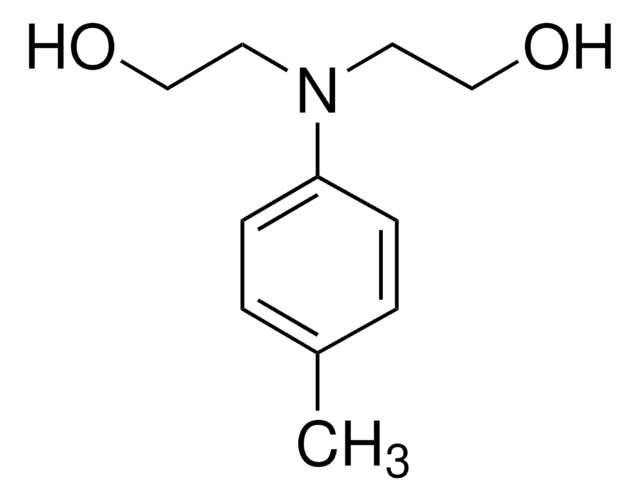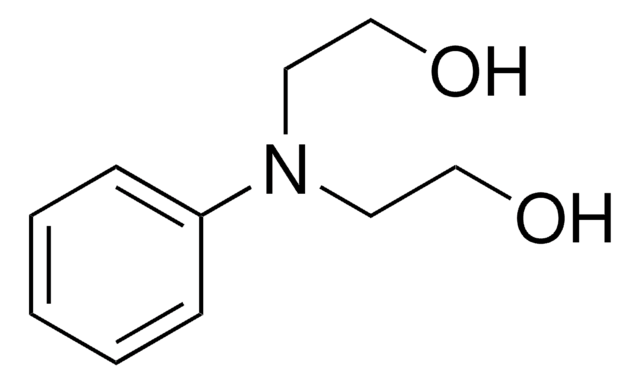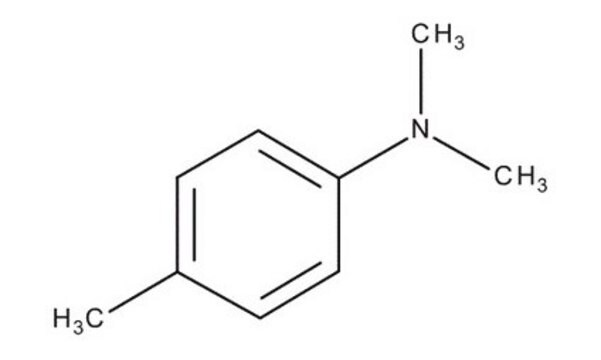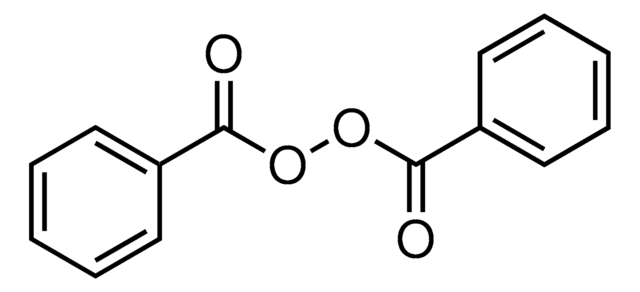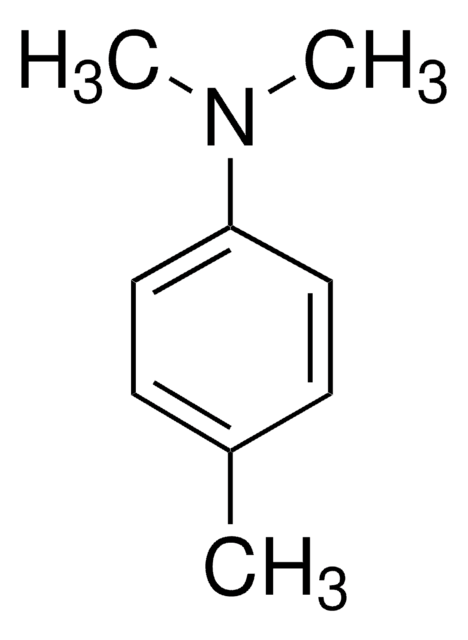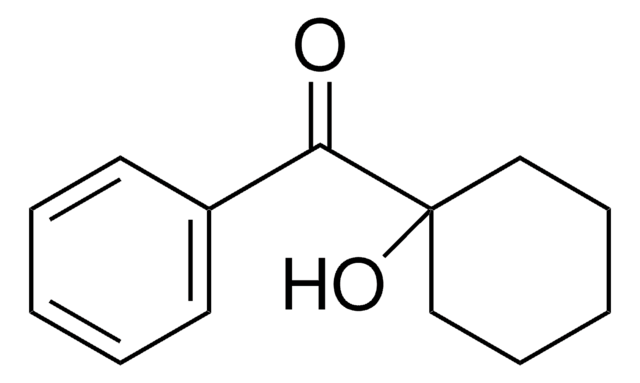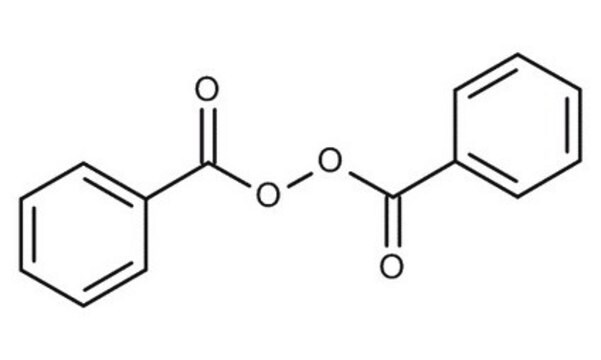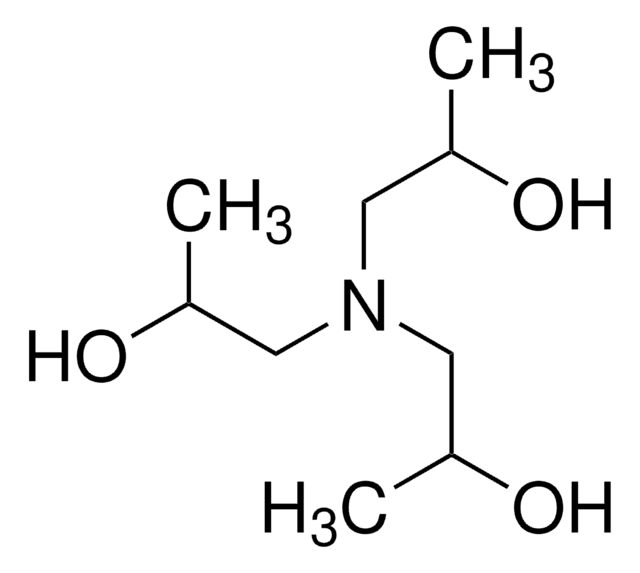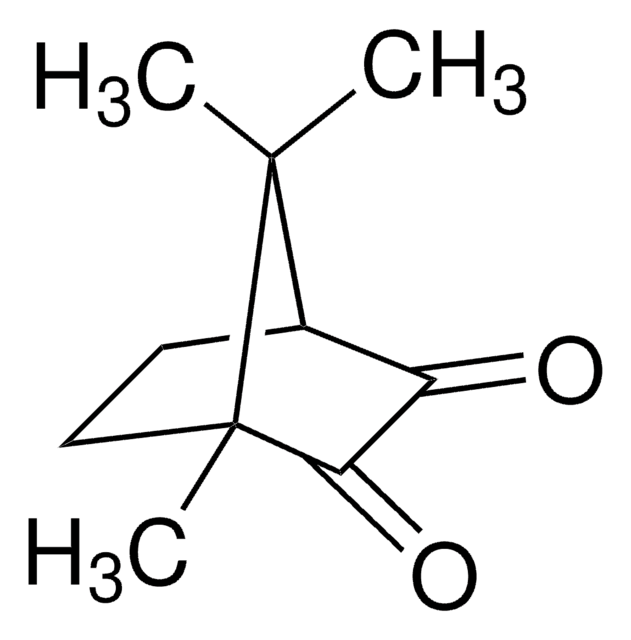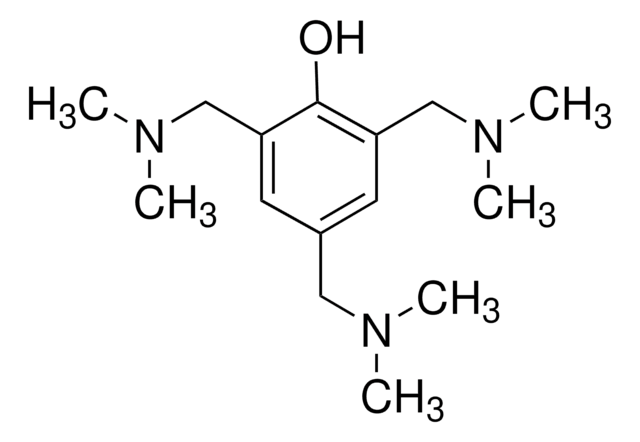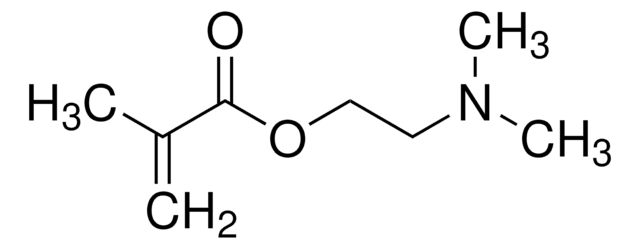14889
2,2′-(4-Methylphenylimino)diethanol
≥97.0% (NT)
Sinónimos:
2,2′-(p-Tolylimino)diethanol, N,N-Bis(2-hydroxyethyl)-p-toluidine, N-(p-Tolyl)diethanolamine
About This Item
Productos recomendados
Nivel de calidad
Ensayo
≥97.0% (NT)
Formulario
solid
bp
338-340 °C (lit.)
mp
49-53 °C (lit.)
grupo funcional
amine
hydroxyl
cadena SMILES
Cc1ccc(cc1)N(CCO)CCO
InChI
1S/C11H17NO2/c1-10-2-4-11(5-3-10)12(6-8-13)7-9-14/h2-5,13-14H,6-9H2,1H3
Clave InChI
JUVSRZCUMWZBFK-UHFFFAOYSA-N
¿Está buscando productos similares? Visita Guía de comparación de productos
Aplicación
Precaución
Palabra de señalización
Danger
Frases de peligro
Consejos de prudencia
Clasificaciones de peligro
Acute Tox. 4 Oral - Aquatic Chronic 3 - Eye Dam. 1 - Skin Sens. 1
Código de clase de almacenamiento
11 - Combustible Solids
Clase de riesgo para el agua (WGK)
WGK 3
Punto de inflamabilidad (°F)
Not applicable
Punto de inflamabilidad (°C)
Not applicable
Equipo de protección personal
dust mask type N95 (US), Eyeshields, Gloves
Elija entre una de las versiones más recientes:
¿Ya tiene este producto?
Encuentre la documentación para los productos que ha comprado recientemente en la Biblioteca de documentos.
Los clientes también vieron
Nuestro equipo de científicos tiene experiencia en todas las áreas de investigación: Ciencias de la vida, Ciencia de los materiales, Síntesis química, Cromatografía, Analítica y muchas otras.
Póngase en contacto con el Servicio técnico